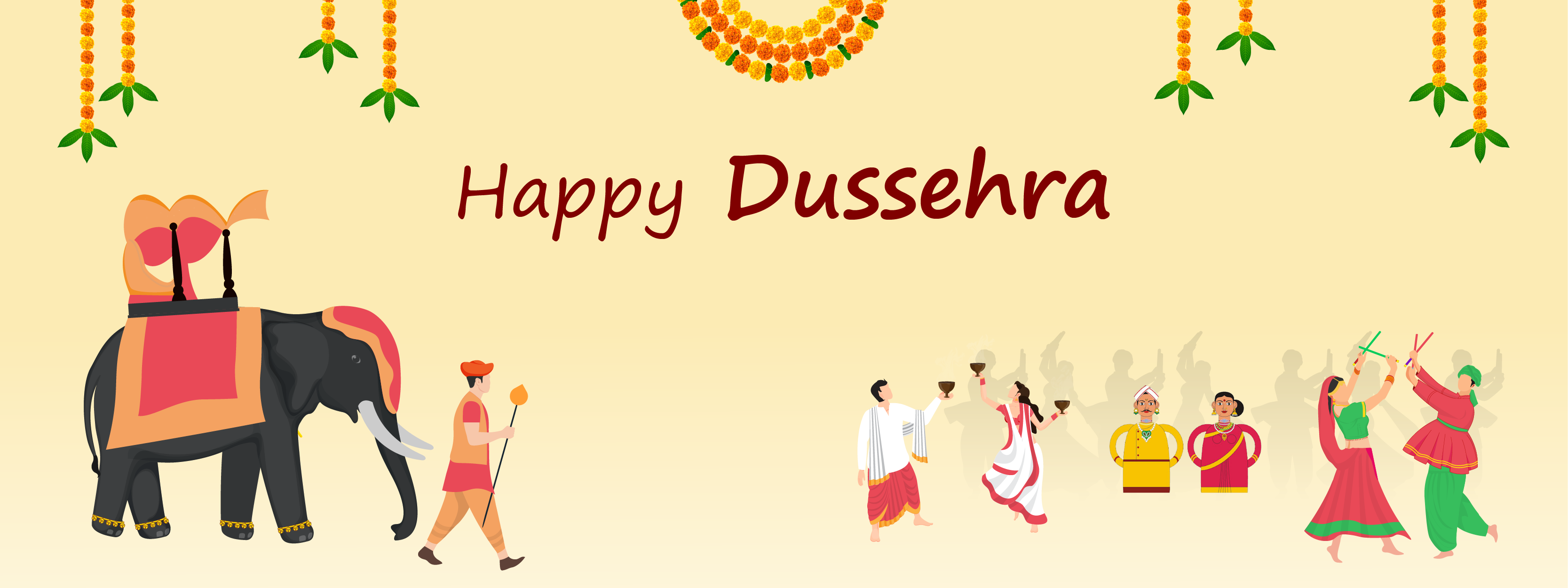Who says India does not have a holiday season?
We do have one! Quiet literally! For many of us, the ‘festival season’ lasts 2-3 months. It begins with the Ganesha festival, continues through Dasara, and ends with Deepawali. It also includes minor celebrations like Nag Panchami, Gauri festival, Bhai Dooj, Bathukamma, etc., depending on where you live.
The entire season is about visiting friends and relatives, wearing new clothes, eating sweets, and making merry. Ahem. Lest I forget, the festivals also have a strong religious, spiritual, and seasonal (weatherwise) significance.
Amongst these festivals, Dasara is the longest. Known as Dasara or Dusshera, Dashain, or Durga Pujo, it is celebrated for ten days (Das/Dus means 10). The first nine days are called Navaratri, and the 10th is called Vijaya Dashami. Though Dasara is celebrated across India, the story behind why it is celebrated changes in different regions and states.
The story behind Dasara…
Dasara signifies the victory of Lord Rama over Ravana. Lord Rama defeated Ravana after ten days of war and brought home his abducted wife, Sita.
For others, it is about the Mother Goddess Durga vanquishing the demon Mahishasura.
And still, in another context, Dasara is the celebration of the win of Pandavas over their cousins, the Kauravas from the great epic, the Mahabharata. It is said that the Pandavas worshipped their special weapons on the ninth day, called the Ayudha Pooja, and won the war on the 10th day, called Vijaya Dashami.
The celebrations of Dasara…
Dasara is a community festival. Music, dance, and processions are an integral part of the celebrations.
In northern parts of India, plays of Ramayana called Ram Leela are staged throughout the ten days of Dasara, with the effigy of Ravana burned on the 10th. In the east, idols of Goddess Durga are installed, and prayers are conducted for ten days. These installations, called Durga Puja Pandals, encourage community worship with drums, music, and dance. Food called bhog is a special attraction at these pandals.
In western India, entire communities come together in a celebration of dances called Garba and Dandiya. It is mesmerizing to watch the crowds – friends, and strangers moving in perfect sync in concentric circles.
Down south, the idol of Goddess Durga is installed for ten days, and each day, She sports a different ‘avatar’. Households display dolls, referred to as Dasara Bombe, Bommala koluvu, etc. You can see traditional handmade or clay dolls to Barbies in these displays. Another famous event is the Mysore Dasara which has a history of 500 years. It is a sight to behold with the royal palace and the entire city decked with lights. It culminates with a ‘jumboo savaari’ – elephant procession. The idol of the Goddess is seated on a golden howdah (a seat or carriage carried on an elephant or camel) weighing 750 kilograms and carried in a procession through the city.
The sweets of Dasara…
Did you know that there are many Indians who fast during Navaratri?
People go on water fasts, fruit fasts, and grain fasts, and some even become vegetarian for ten days. Fasting for nine days is another way to detoxify the body and is recommended by Ayurveda. It is believed that metabolism during the nine days of Dasara is slow, and fasting helps the body to rest and recover.
But what if you are a foodie?

If you are a foodie, then there is no other place for you than India during the festivals. And the ten days of Dasara can put you into a food coma. If they don’t put you into a food coma, they will definitely make you gain more than a few pounds.
Well, more than 85 sweets and savories are made across India during Dasara. Varieties of Laddoos, Barfi, Rava Kesari, Obbattu, Rosogulla, Gulab Jamoon, Jalebi, Mysore Pak, Chakli, Nippattu, Sev, Malpua, Payasam, phew… it just goes on and on.
Check these recipes by the famous chef, the late Tarla Dala – maybe you will be inspired to try your hand at them.
So what does Dasara actually stand for
On the tenth day, the effigy of Ravana is burned. Women play Sindoor Khela, , where they smear vermillion on each other to celebrate the victory of the Goddess Durga over a demon. The idols of Durga are then immersed in water – signifying her return to her abode after killing the demon.
The common thread that runs across the different stories of Dasara is how good always wins over evil – Dharma over Adharma. No matter how hard it is and no matter how long it takes. Ravana, Mahishasura, and the Kauravas stand for the same things – darkness, ego, greed, selfishness, prejudice, etc. The stories appeal to our spiritual nature – telling us to defeat the negativity within us and try to attain enlightenment.
Every Dasara is a chance for us all to renew ourselves – a pledge to turn over a new leaf and follow the path of dharma.
India is not just the land of color; it is the land of festivals since people of different religions live here. Not a month goes by without one festival or another being celebrated somewhere in our vast country.
I am already waiting for Deepawali. And I hope so are you – to read about the festival of lights.



